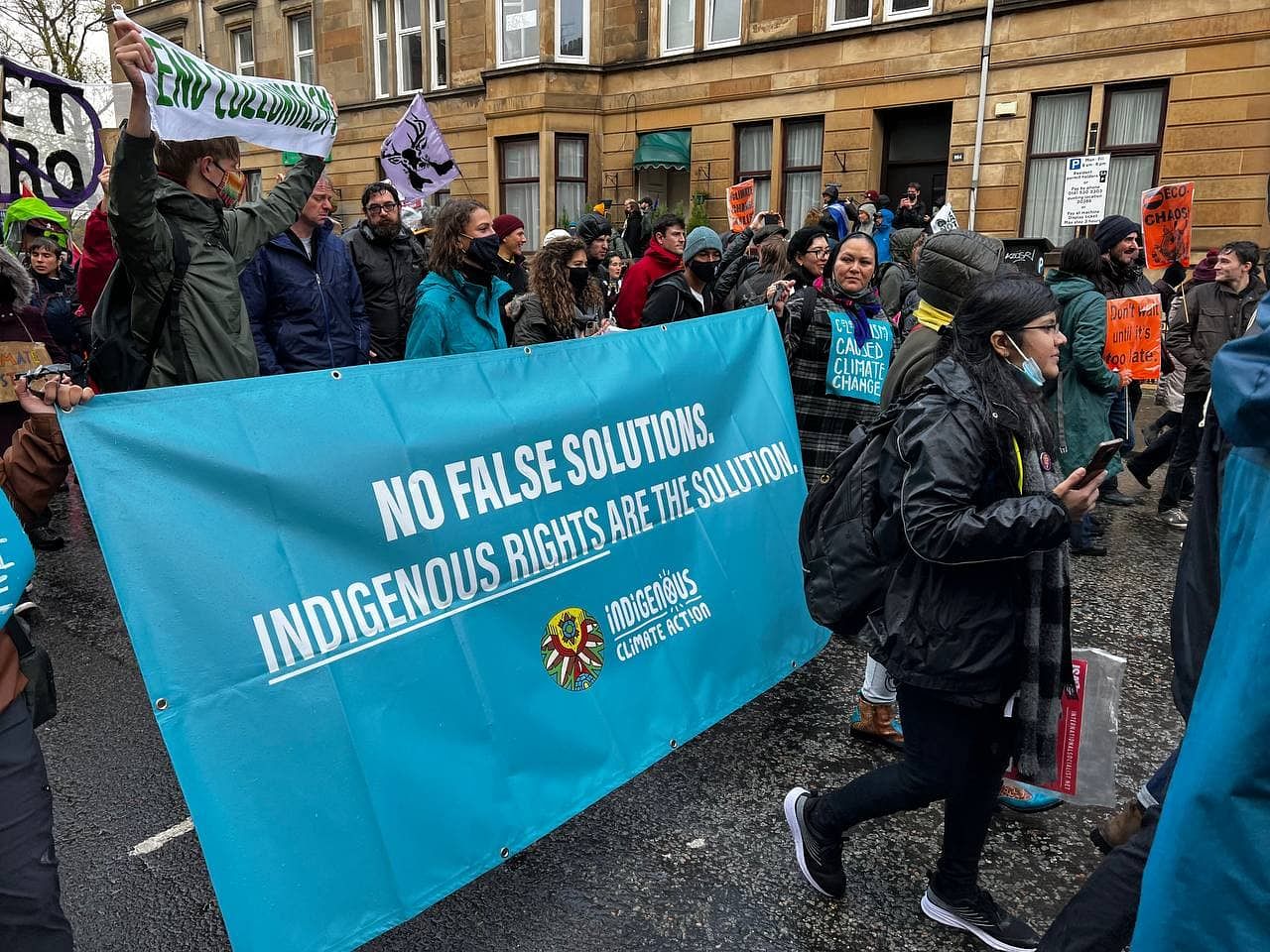GLASGOW - For the second day in a row, the drum beat of climate protesters rang out across Glasgow.
More than 100,000 people marched on Saturday (Nov 6) as part of a global day of action. The crowd was even larger than Friday's Youth Day march that featured Swedish activist Greta Thunberg.
Despite bitterly cold winds and driving rain, marchers of all ages chanted and sang while others beat drums to get their message across. And that message is: Less talk, more action.
Protesters say the world is at great risk and the COP26 conference being held nearby must deliver a strong deal to limit the threat from climate change.
Thousands turned out to watch and cheer on the processions in a good-natured atmosphere. While there was a strong police presence, the march was peaceful as it got underway from Kelvingrove Park, then weaved its way to central Glasgow.
A key theme was climate justice for those most affected by climate change, namely the poorest and most vulnerable nations, migrants as well as indigenous groups.

1. Saving nature and climate-friendly food
Nature took centre stage on Saturday, day seven of the COP26 climate talks.
A total of 45 nations signed up to a pledge to protect forests and other threatened ecosystems and reform the way food is grown.
The focus on nature is vital because it provides necessities such as clean air and water, as well as soils for crops. Forests, soils and oceans also soak up carbon dioxide (CO2), the main greenhouse gas.
Yet, ecosystems are already under pressure from climate change and damaging agricultural practices, such as deforestation to plant vast soybean and corn crops, build oil palm plantations, as well as cattle ranches for beef.
Agriculture, forestry and other forms of land use produce about a quarter of the world's greenhouse gas emissions. Food waste is another large source.
On Saturday, the United States, Britain, Japan and Germany and developing nations such as India, Indonesia, Morocco, Vietnam, the Philippines and Ghana set out pledges to transform agriculture and food systems through policy reforms, research and innovation to cut emissions and protect nature.
Key next steps by nations include enacting policies to change their agricultural policies to become more sustainable, less polluting and to invest in crops that are more resilient to the impacts of climate change.

Some examples: Brazil plans to scale its low-carbon farming programme to 72m hectares, saving 1 billion tonnes of emissions by 2030; Germany plans to lower emissions from land use by 25m tonnes by 2030.
Ninety-five companies from a range of sectors committed to being "Nature Positive", agreeing to work towards halting and reversing the decline of nature by 2030.
Commitments include supermarkets pledging to cut their environmental impact across climate and nature-loss and fashion brands guaranteeing the traceability of their materials.
2. Nature's guardians
Indigenous groups from the Americas, Asia and Africa play a vital, if sometimes little appreciated, role in fighting climate change.
For centuries they have managed their forest homes and intimately understand these environments. Indeed, research has shown indigenous people are key to preserving forests that are huge stores of biodiversity and carbon. What they need is better protection of their lands and legal recognition of ownership.
Trees soak up large amounts of planet-warming carbon dioxide (CO2), acting as a brake on climate change. And tropical forests store vast amounts of carbon, which is released when the trees are chopped down and burned.
A study released on Saturday shows that 958 million hectares of indigenous and community territories contain over 250 billion metric tonnes of carbon.
However, these communities only have legally recognised rights to less than half of this area (447 million ha), jeopardising the landscapes they protect as well as at least 130 billion metric tonnes of carbon contained in these areas.

The Rights and Resources Initiative, Woodwell Climate Research Center and Rainforest Foundation US carried out the study, which looked at traditional communities across 24 countries containing 60 per cent of the world's tropical forest area.
"This data shows what scientists have been saying for years: Indigenous Peoples and local communities must be co-authors, not just participants, in climate and biodiversity solutions," said Mr Tuntiak Katan, Indigenous Shuar of Ecuador and General Coordinator of the Global Alliance of Territorial Communities (GATC), an alliance of traditional communities in the 24 countries, which includes Brazil, Bolivia, Democratic Republic of the Congo, Costa Rica, Ecuador, Indonesia and Mexico.
"This absence of tenure security renders communities and their lands and forests vulnerable to encroachment and external pressures, hampering their ability to sustainably govern these areas, pursue their self-determined priorities, and meet their livelihood needs," the authors of the study note.
3. Taking a break
Sunday is a mandated rest day for the UN climate talks, though some negotiators will be working through the break as pressure grows to reach a deal by the end of next week.
Carbon Copy will return on Tuesday.

